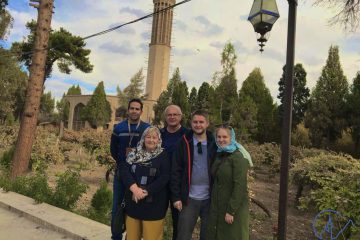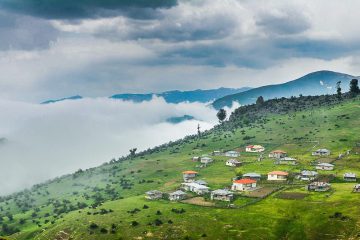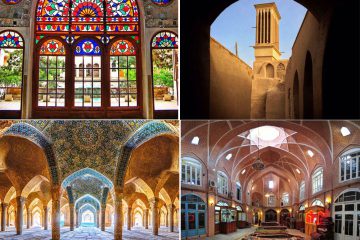
10 Top Natural Attractions You Don’t Know that Exist in Iran
If you want more than just ancient monuments and historical mosques in Iran, explore its unique natural wonders. From tall mountains to vast deserts, and dense forests to charming springs, there’s a world of adventure and lasting memories waiting for you.
From the enchanting Persian Gulf and the Sea of Oman to the expansive Caspian Sea in the northern reaches, Iran’s canvas includes various deserts, lush jungles, stunning lakes, meandering rivers, vast plains, mysterious caves, and formidable mountains. Each region in Iran boasts its own set of natural wonders, creating a sense of stepping into a new country as you journey from one province to another.
Come along on this journey as we step into the world of Natural Attractions of Iran, exploring the breathtaking diversity that makes it a true masterpiece of nature.
1. Mount Damavand
Discovering Iran’s Tallest Peak in the Alborz Range, The First Natural Attractions of Iran.
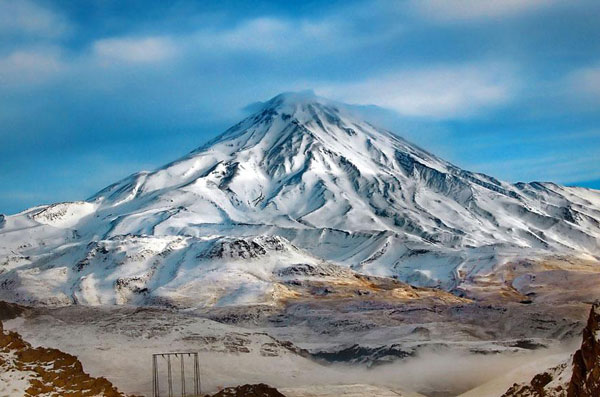
Nestled about 65 kilometers north of Tehran in the Alborz range, Mount Damavand is the highest mountain in the Middle East, reaching a height of 5610 meters. Climbers worldwide visit Iran every year to conquer this snow-covered summit. If you’re in Tehran during less polluted times, like Nowruz holidays, you might catch a stunning view of Damavand Peak from the city.
With its legendary status, Mount Damavand offers breathtaking scenery from a distance, through pictures, or from its summit. Apart from its natural beauty, Damavand is deeply woven into Iranian culture, mythology, and civilization. Many poets have celebrated it in their verses, and numerous legends add to its mystique.
For those yearning to explore the green and flowered plains surrounding Damavand, spring emerges as the optimal season. Experience the vibrant colors and natural beauty that adorn the landscape during this time.
Climbing Damavand requires good physical condition and proper training. A well-planned three-day climbing program, along with a reliable team, an experienced guide, and the right equipment, is crucial for reaching the summit. Join this adventure to not only conquer a remarkable peak but also become part of Damavand’s rich cultural and natural heritage.
2. Lut Desert

Hidden away in Kerman Province, the Lut Desert is renowned as one of Iran’s hottest natural wonders, and some consider it the Earth’s hottest spot. Let’s uncover the practical aspects of this extraordinary desert and its diverse features.
The Lut Desert captivates with its expansive terrain and varied natural landmarks. In the Shahdad region, the Kaluts, resembling vigilant bodyguards, contribute an air of mystery to the landscape. The desert’s topography is diverse, with certain areas resembling the folds of a brown shirt, while others mirror the fragmented pieces of an ancient clay plate.
Beyond being a blistering expanse, the Lut Desert offers captivating starlit nights. Spending a night in this desert provides a surreal experience, making you feel like the center of the universe, with stars dancing around you.
For desert enthusiasts, the Lut Desert provides ecolodges, ensuring a comfortable stay amidst the awe-inspiring surroundings. These accommodations cater to those eager to explore Iran’s natural wonders in all its splendor.
Watch this amazing Lut desert, a caravanserai, and Yazd desert drone shots by Hugo Moussy
3. Qeshm Island
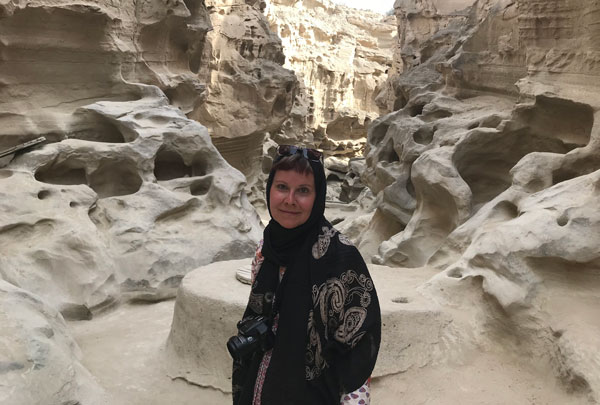
Nestled in the heart of the Persian Gulf, Qeshm Island stands as the largest Iranian island, boasting its status as one of the top natural attractions in the country. Recognized as the biggest Geopark in the Middle East and a UNESCO Geopark of global renown, Qeshm Island is a treasure trove of natural wonders.
Qeshm is not messing around when it comes to natural wonders. We’re talking about Namakdan Cave, the kind of place that makes you feel like you’ve stepped into another world. Then there’s Chahkooh Canyon, giving you all the drama you never knew you needed. And don’t even get me started on the Valley of Stars – pure enchantment.
But that’s not all. Xorbas Cave and Laft Village add their spice to the mix. It’s like nature went all out to show off on this island. And let’s not forget the Persian Gulf hugging Qeshm with its charm, and those romantic beaches that just scream “paradise.”
Want the inside scoop? Winter and autumn are the times to hit up Qeshm. The weather’s on your side, making it the perfect playground for explorers like us. Trust me; you don’t want to miss out on this slice of Iranian paradise.
4. Cloud Forest

Picture these Natural Attractions of Iran: one of Iran’s coolest spots – the cloud forests in the Caspian Hyrcanian eco-region. These forests aren’t your regular ones; situated in the mountains, these forests uniquely allow clouds to permeate through, creating an ethereal experience where you can walk among the clouds. Among these wonders is the Shahroud Cloud Forest, a stunning area located 45 kilometers north of Shahroud in Semnan province. It’s a must-visit for those seeking the beauty and magic of nature in Iran.
5. Alisadr Cave
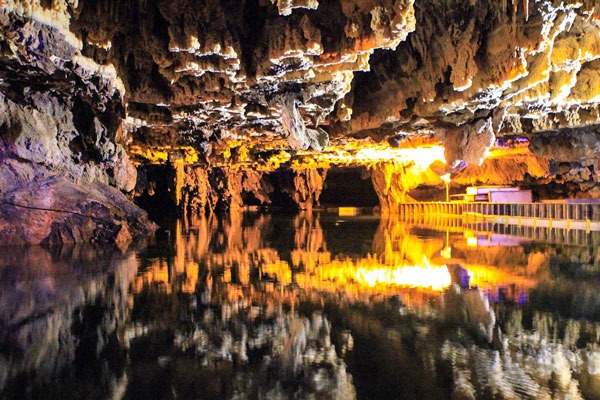
Nestled in Hamadan province, Alisadr Cave is a star attraction, holding the world’s largest water cave title. This cave is a hot favorite among thousands of visitors throughout the year, especially during the refreshing seasons of spring and summer. Found in Kabood Ahang, a city just 60 kilometers from Hamadan, Alisadr Village is its neighboring spot, a mere 50 kilometers from Kabudarahang.
What makes Ali-Sadr special? Well, for starters, it’s one of the rare water caves on the planet. But it’s not just any cave – it’s a time machine. The Jurassic Period rocks, dating back a whopping 190 million years, transport you to a prehistoric era. Stepping inside, you’ll immediately feel the cool embrace, a welcome escape from the outside heat.
What’s cool about the lake in this cave? It’s crystal clear, letting you peek through to the bottom. To explore, hop on a boat, throw on a life jacket, and navigate the natural labyrinth within the cave.
6. Miankaleh Peninsula
The six Natural Attractions of Iran, the Miankaleh Peninsula in Māzandarān Province is not just a narrow stretch of land; it’s a haven for migratory birds and a natural wonder that captivates all who visit. This birdwatcher’s paradise is teeming with unique Caspian birds and reptiles indigenous to the region, including the elegant Phoenicopterus, the striking Dalmatian pelican, graceful swans, ducks, geese, as well as the western marsh harrier and the majestic white-tailed eagle.
Since 1976, Miankaleh and Gorgan Bay have jointly formed the International Wetland and UNESCO Biosphere Reserve. Along the way to Miankaleh Wetland, you’ll encounter two more gems – Zaghmarz Lapoo Wetland and Dasht-e-Naz protected area, both contributing to Iran’s natural allure.
If you’re planning a visit, the prime time to experience Miankaleh Wetland’s charm is from late November to late February, spanning late fall to early winter. For the shutterbugs out there, photographers recommend catching the mesmerizing sunrise or sunset to capture the very essence of Iran’s breathtaking natural beauty
7. Raghaz Canyon

Nestled amid the stunning landscapes of Iran, Raghaz Canyon emerges as the ultimate choice for canyoneering enthusiasts, endorsed by local experts for its unparalleled challenge and excitement. While Iran boasts numerous canyons, none rival Raghaz in terms of ease and thrill. It stands out as a pinnacle canyoneering adventure, promising an experience that lingers in your memory.
A few years back, my first encounter with Raghaz Canyon was nothing short of extraordinary. Rappelling down the cascade path with ropes and relishing jumps into clear, fish-filled basins, I couldn’t have foreseen that this hidden gem would evolve into a top destination for adventurers.
Situated just 30 kilometers northeast of Darab city, Raghaz Canyon spans four kilometers, peacefully nestled between towering cliffs. The name “Raghaz,” translating to “slippery” in the local dialect, perfectly encapsulates the pristine and spectacular nature of this canyon, also known as “Rud Khiz” Canyon among locals.
Now, fair warning – Raghaz isn’t a cakewalk, especially for newbies. If you’re diving deep into this canyon, you better have some swimming, rock climbing, and canyoneering know-how. Oh, and don’t forget the pro-level equipment. Safety first, adventurers!
8. Rainbow Mountains

Have you heard about the Rainbow Mountains in Mahneshan? They’re like 25 km away from Tabriz in Zanjan Province – a total hidden gem! Picture these Natural Attractions of Iran: a natural wonderland painted with different minerals, giving you the coolest rainbow effect ever. Picture hues ranging from vibrant yellow and pristine white to warm orange, fiery red, earthy brown, and lush green – it’s like strolling through a palette of colors in a foreign galaxy.
The locals here don’t just admire the beauty; they incorporate it into their traditions. The colorful soil from these mountains is used to adorn Nowrouz tables, adding a burst of vibrancy to the festivities. That’s how lively and dynamic this place is!
But hold on, the Rainbow Mountains are just the tip of the iceberg when it comes to Mahneshan’s natural attractions. The entire area is a treasure trove, boasting stunning water streams and an array of other natural beauties that elevate it to the status of an exceptional destination.
9. Badab-e Surt Springs

For the geology enthusiasts out there, Badab-e Surt Springs is an absolute marvel. Nestled in Mazandaran province, just around 100 km south of Sari, these springs boast incredible rock formations that are a sight to behold. Picture this – stair-like structures formed by the deposited sediments, creating a stunning array of colors in different seasons: from gold and yellow to vibrant orange and deep red.
Adding to the allure, two of these springs are believed to be potable and even possess healing properties. It’s not just a treat for the eyes; it’s a place where nature’s magic meets wellness. No wonder photographers have a field day capturing its beauty.
Sadly, despite its wonders, Badab-e Surt Springs is facing threats and undergoing destruction for various reasons. It’s a reminder of the delicate balance we need to maintain to preserve these natural wonders for future generations.
10. Dasht-e Kavir
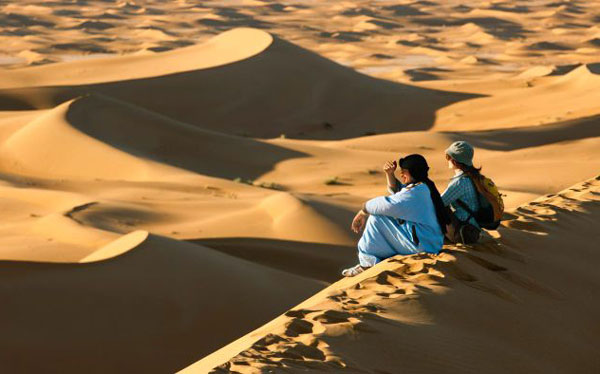
In the heart of the Iranian plateau lies the vast and captivating Dasht-e Kavir, also known as the Kavir-e Namak or the Great Salt Desert. Situated northwest of Isfahan and Yazd, this Natural Attractions of Iran seemingly barren expanse holds its unique charm.
Despite its apparent harshness and scorching temperatures, Dasht-e Kavir is a spectacle that leaves you in awe. The sheer magnitude of the desert unfolds before you, but a word to the wise – navigating aimlessly or without company is not advisable.
One of the desert’s gems, making it more accessible to tourists, is the Namak (Salt) Lake, just a hundred kilometers from Qom. Stepping onto the white salt flats feels like setting foot on another planet – it’s an otherworldly experience.
While you soak in the surreal beauty, don’t forget to stay vigilant for the desert’s wild residents, including the Asiatic cheetah and the goitered gazelle. And here’s a tip for survival in this challenging terrain – pack plenty of water and sunscreen because Dasht-e Kavir is not for the faint of heart.


